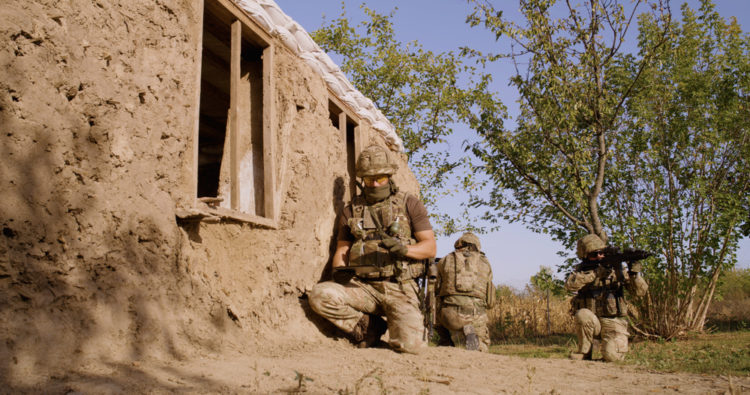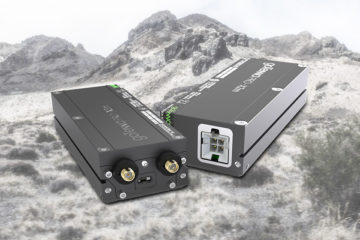Three tips for assured comms in austere environments

For all operations in austere environments, having assured comms is essential for the life and safety of those in the field, as well as the success of the mission.
Imagine that you are part of a small team operating in an austere environment tasked with gathering critical information on a selected area of interest. You spent hours building the perfect surveillance site and have gathered the critical information that was required of your team. But then, when it comes time to transmit your report, all you hear is silence on the other end of the hand mic.
You and your team have now become a liability and the mission is on the verge of being aborted. What could you have done to prevent this? What can you do to make sure the mission is still a success?
Here are three tips for enabled assured comms in austere environments, including ways that you can ensure mission success, even in the event that communications are lost.
- Select the right equipment
Before you select your equipment, and prior to your team stepping off, you need to define your mission and the area you will be operating in. What does the mission entail? What is the duration of your mission? What frequencies (HF/VHF/UHF/SATCOM) are best suited for the job? What is the range between you and your subordinate/adjacent elements? What type of terrain will you be operating in? Do you need voice or just the ability to do mapping, messaging and personnel tracking?
Once you’ve answered those questions, you can begin to weigh some of the different communications equipment options that are available for the mission. When deciding what equipment can best deliver assured comms for your particular mission, you must consider:
- Type of antenna
- Operating frequency
- Terrain
- Location of and distance between radios
- Atmospheric conditions
The two major variables in terms of equipment selection are frequency range and power output. Everything else is a “feature” to help you align your equipment with your mission. Some common features include: encryption, battery life, durability, repeater capability and more.
Similar to how you select the right tool for a job, you have to select the right radio or device for the mission’s requirements to be able to communicate effectively.
This begins by identifying your relationships with whom you want to talk to and in what environment you are operating in, which is imperative to understanding what equipment you will need to employ.
Perhaps you are operating in a degraded environment, where cell service is nonexistent and potential adversaries possess anti-satellite capabilities. Our reliance on satellites as the backbone of our long haul communications can be a hindrance to our mission. High Frequency communications provides a reliable, over-the-horizon voice and data communication option, or for a less expensive, light-weight and low-bandwidth solution, your team can establish a robust and encrypted mesh network with a few goTenna Pro X ’devices and use TAK Chat.
- Have a robust PACE Plan
An effective Primary, Alternate, Contingency, and Emergency (PACE) plan for assured comms is an important part of any team’s success. A PACE plan directs how a team communicates across their area of operation. As communications degrade due to terrain or other variables, the PACE plan provides the team alternate methods of communications.
A reliable, executable and rehearsed PACE plan can be the difference between mission success and mission failure. To develop a great PACE plan, the rules are simple; ensure it can be executed by all subordinate / supported elements, ensure that multiple means of communication spread across the electromagnetic spectrum, and ensure that it includes a varying set of technologies.
Having redundant, assured comms does not require having four means of voice communications. It is acceptable to include means of chat, or the sharing of position and location information for mapping, and personnel tracking in comms-denied environments.
And finally, we can’t exclude visual signals from our PACE plan. A PACE plan with a signal flare or smoke as an emergency means of communication is an effective way for assured comms when all else fails.
- What to do when communication is lost
Even the best laid plans can fail, so teams need to develop a plan for loss of communications. The team leader must consider if the mission can be accomplished without sacrificing safety and control of the team should internal comms go down. Every attempt should be made to link-up and fix the equipment. However, if a fix cannot be made in the field, then additional mission planning will be required. Loss of internal communications should be reported to commanding officers as soon as the mission allows.
If a team is unable to communicate with Command, they will move to their pre-planned no comms PZ or begin their E&R plan. For example, the no/lost comms plan will be executed if the following criteria is met:
- No comms four hours after insertion
- Missing four consecutive communications windows
- 24 hours with no communications
The use of communication windows is vital in having those pre-planned decision points in case comms do goes down. Comms windows require trust and are set according to a predesignated schedule.
The most important thing to do is to not panic. The team leader needs to take that tactical pause and assess the ABC’S of troubleshooting.
A = Antenna. Check the antenna.
B = Battery. Check the battery.
C = Connection. Check all connections to and from the radio.
S = Setting. Check the setting for the radio or if using chat, check the settings of the phone or plugin.
Sometimes even moving a small distance from your original communication site can make the difference. And remember, the brilliance of PACE is what some might call supple degradation. When your primary radio means fails, don’t panic; you still have A, C, and E.
Ultimately, assured comms are essential for the health and safety of tactical teams and for mission success. By planning well in advance, having redundant backups and established contingencies, and staying calm should primary means of communications fail in the field, team leaders can ensure mission success, and the safety of their subordinates.







No Comment